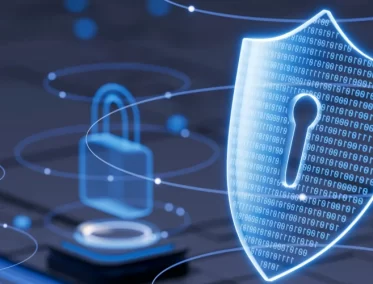In today’s fast-paced and ever-changing technological landscape, companies are increasingly relying on outdated technologies, to great risk, to maintain their operations. While these systems may still be functional, they often lack the latest security features and are vulnerable to a wide range of cyber threats.
This is where Endpoint Detection and Response (EDR) solution implementation come in. By monitoring and analyzing endpoint activity in real-time, EDR solutions can detect and respond to security incidents quickly and effectively, even on outdated systems. In this article, we’ll explore five key considerations (and a bonus one!) for effective EDR implementation and how it can help protect your organization’s outdated technologies from cyber threats.
5 Key Considerations for Effective EDR Implementation
1. Identify the Right EDR Solution
Regarding EDR, a universal solution is not available. It is imperative for organizations to assess and opt for an EDR solution that is in line with their distinct security prerequisites and operational demands.
Prior to finalizing an EDR solution, it is recommended that organizations ask themselves important considerations in regards to:
- Can you confirm if the EDR solution is compatible with the platforms used in the organization, including Windows, Mac, and Linux?
- What is the level of user-friendliness of the EDR solution in terms of deployment, configuration, and utilization?
- Are advanced features, such as behavioral analysis, machine learning, and threat intelligence integration, provided by the EDR solution?
- Is it possible for the EDR solution to achieve integration with other security solutions, such as SIEM and antivirus software?
- Regarding scalability, is the EDR solution capable of accommodating the expanding security requirements of the organization?
2. Define the Scope of the Solution
EDR solutions are capable of accumulating a substantial volume of data from endpoints. However, analyzing and comprehending this data can pose a significant challenge.
Hence, it is imperative for organizations to delineate the extent of the EDR solution, encompassing:
- What are the endpoints that will be monitored by the EDR solution?
- Which security events are to be monitored?
- What data types will be gathered from the endpoints?
- What methodology is employed for data analysis and reporting?
3. Establish a Response Plan
A proficient EDR implementation must not solely identify plausible security incidents but also offer prompt and efficient incident response. Thus, it is imperative for organizations to formulate a comprehensive incident response plan that delineates the necessary measures to be executed in case of a security breach.
It is recommended to incorporate a comprehensive response plan that encompasses
- Regarding roles and responsibilities, specify the personnel accountable for addressing a security incident and their respective duties.
- Provide details on the incident response procedures to be followed in case of a security breach, including measures like endpoint isolation, evidence gathering, and stakeholder notification.
- The proposed communication strategy for the incident response team to effectively communicate with internal and external stakeholders, including management, legal, and law enforcement.
- Regarding the response plan’s longevity and efficacy, the measures that will be taken to test and refine it.
4. Ensure User Education
Although an EDR solution has the capability to identify potential security incidents, it is not entirely foolproof in preventing all attacks from taking place. It is imperative to provide end-users with proper education regarding the identification and reporting of potential security incidents. By including user education in the EDR implementation, enterprises can mitigate the likelihood of successful cyber attacks and enhance the efficacy of the solution.
Providing fundamental security awareness training to end-users. It is recommended that end-users undergo fundamental security awareness training encompassing threat identification, incident reporting, and sensitive data protection.
- Incident reporting procedures: End-users should be informed of the incident reporting procedures, which include who to contact in the event of a security incident and how to provide relevant information to the incident response team.
- Ongoing training: End-users should receive ongoing training to ensure they remain up-to-date on the latest
5. Integration with Other Security Solutions
An essential aspect to contemplate in the EDR implementation project is its integration with other security solutions within your enterprise. It is recommended that your EDR solution possess the capability to seamlessly integrate with other security tools, thereby enabling a comprehensive perspective of your security posture. Implementing this solution will enhance your threat detection and response capabilities.
For optimal security measures, it is recommended that your EDR solution be integrated with your SIEM (Security Information and Event Management) system. The SIEM system is responsible for gathering and evaluating security events from multiple sources. Through seamless integration with your SIEM system, the EDR solution can furnish supplementary insights into security incidents and facilitate precise identification of potential threats.
It is recommended that your EDR solution be integrated with your threat intelligence feeds. Threat intelligence feeds furnish insights on established threats and vulnerabilities. By implementing an EDR solution that is integrated with your threat intelligence feeds, you can enhance your ability to promptly detect and respond to potential security threats.
Bonus: Ease of Use and Management
Another crucial aspect to contemplate while deploying an EDR solution is the convenience of usage and administration. The EDR solution ought to possess a user-friendly interface and streamlined administration, catering to both technical and non-technical users. The interface must possess an intuitive design that facilitates prompt investigation and response to security incidents by security analysts.
It is recommended that the EDR solution be designed with a user-friendly management interface. The solution must possess extensive reporting and analytics functionalities, empowering security managers to oversee the efficacy of their security operations and arrive at security investment decisions based on data.
EDR solutions are a crucial element of contemporary cybersecurity. They offer enterprises the capability to identify and counter sophisticated threats that conventional antivirus software is incapable of detecting.
When deploying an EDR solution, it is crucial to bear in mind the scalability and flexibility of the solution, the efficacy of the detection and response capabilities, the potential for integration with other security solutions, and the simplicity of use and management.
By conducting a thorough analysis of these variables, you can opt for an EDR solution that aligns with your enterprise’s distinctive requirements and strengthens the safeguarding your organization needs to counteract modern, sophisticated cyber attacks.




